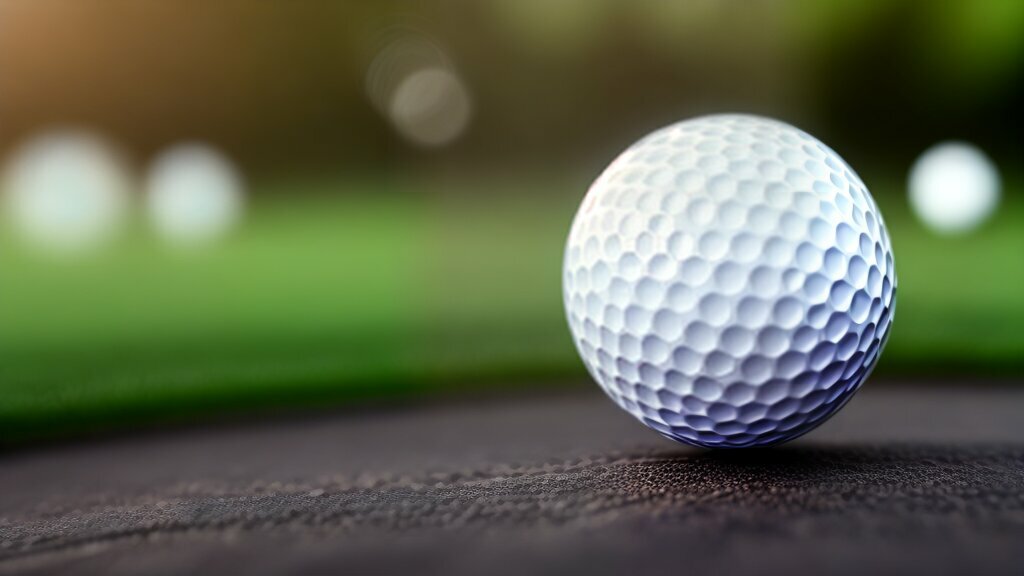Golf balls may seem like simple sports equipment, but their creation involves a complex process that demands precision and expertise. As a golf enthusiast, I’ve always been intrigued by the manufacturing of golf balls.
I’ve often wondered about the materials used, the techniques employed, and the technologies that make golf balls the high-performance tools they are known for.
In this article, I set out to uncover the secrets behind the creation of golf balls. Join me as we explore the step-by-step process, the construction techniques, and the advanced manufacturing methods used in the golf ball industry.
Delve into the equipment and technology deployed in the production and discover how the industry ensures the golf balls’ quality and consistency.
Key Takeaways:
- The manufacturing of golf balls involves a complex process that demands precision and expertise.
- The construction of golf balls involves various components and materials that affect their performance and characteristics.
- The golf ball industry employs advanced manufacturing techniques and technologies, including compression molding and casting, to achieve consistency and durability in production.
- The equipment and technology utilized in golf ball manufacturing include innovative machinery, quality control systems, and testing methods that ensure high-quality golf balls for players worldwide.
Golf Ball Manufacturing Process: An Inside Look
Manufacturing golf balls is a complex process that involves multiple stages, each crucial in ensuring the final product’s quality and performance. In this section, I will provide an in-depth exploration of the step-by-step process involved in manufacturing golf balls.
Step 1: Core Formation
The core is the innermost part of the golf ball, responsible for its compression and rebound properties. The core formation begins with mixing synthetic rubber compounds, which are then melted and injected into cylindrical molds. The molds are then transferred to a vulcanization oven, where the rubber is heated and cured to form the core.
Step 2: Outer Layer Application
The next step involves applying an outer layer to the core, which determines the ball’s feel and durability. The outer layer is made of a thermoplastic resin, which is heated to a high temperature and then injected onto the core. The ball is then transferred to a mold, where it is compressed to form a smooth and consistent surface.
Step 3: Dimple Patterning
The third step involves creating dimples on the ball’s surface, which reduce air resistance and provide lift and control. The balls are transferred to a dimpling machine, which strikes the surface with a pattern of dimples. The number, size, and shape of dimples vary depending on the ball’s intended use, such as distance or control.
Step 4: Finishing Touches
After the dimpling process, the balls are washed, dried, and polished to remove any imperfections. The balls are then inspected for quality and performance, including attributes such as size, weight, and compression. Any substandard balls are discarded, while the rest are packaged and shipped to retailers or directly to consumers.
The golf ball manufacturing process is a combination of art and science, requiring precision and attention to detail to ensure consistency and performance. Each stage is carefully monitored and executed using advanced technologies and equipment to produce golf balls that meet the high standards demanded by players worldwide.
Golf Ball Construction: Choosing the Right Components
In golf ball manufacturing, choosing the right components plays a crucial role in determining the ball’s performance. The three primary components are the core, cover, and dimples.
| Component | Material |
|---|---|
| Core | There are two types of cores, solid and liquid. A solid core is made of rubber, which is molded into a ball shape. A liquid core is made of a mixture of rubber and a liquid center, typically water or oil. |
| Cover | The cover is the outer layer of the ball and is made of various materials, including urethane, surlyn, and balata. Urethane provides a soft feel and increased spin, whereas surlyn is more durable and offers less spin. Balata offers a soft feel and high spin but is less durable. |
| Dimples | Dimples, which cover the surface of the ball, play a critical role in the ball’s flight and trajectory. The number, size, and pattern of dimples determine how air flows around the ball and affects its lift and drag. |
Choosing the right components can impact a golf ball’s distance, spin, and feel. For example, a ball with a softer core will compress more upon impact and generate more spin, while a harder core will produce less spin and more distance. Additionally, the cover material can affect the ball’s feel and spin, with softer covers providing more spin and control.
Golf Ball Manufacturing Techniques: Advanced Processes Used in the Industry
Advanced manufacturing techniques have revolutionized the golf ball industry, enabling manufacturers to produce high-quality golf balls with exceptional consistency and performance. In this section, we will explore some of the innovative methods used in golf ball manufacturing.
Compression Molding
Compression molding is one of the most common techniques used in golf ball manufacturing. In this process, the core material is placed inside a metal mold, which is then heated and compressed to form the shape of the golf ball. This method allows manufacturers to produce golf balls with consistent size and shape, and with a solid construction that enhances performance.
Casting
Casting is another popular technique used in golf ball manufacturing. In this process, liquid rubber is poured into a mold to create the core of the golf ball. The rubber is then allowed to solidify before the cover material is added, resulting in a golf ball with a soft feel and optimal performance.
Multi-Layer Construction
Multi-layer construction is a relatively new technique that has gained popularity in recent years. This process involves the use of multiple layers of materials, each with its unique properties, to create golf balls that offer exceptional distance, spin, and control. The layers are designed to work together to achieve optimal performance, resulting in golf balls that are highly responsive and versatile.
Overall, the golf ball manufacturing industry continues to evolve, with new materials, technologies, and processes being developed and refined constantly. These advancements have contributed to the production of golf balls that meet the diverse needs and preferences of players worldwide, from beginners to professionals.
Golf Ball Manufacturing Equipment and Technology
The golf ball manufacturing process requires advanced equipment and technology to ensure the production of high-quality and consistent balls. Below are some of the key components and machinery used in the industry:
| Equipment | Description |
|---|---|
| Core Former Machine | Used to mold the core of the golf ball from a combination of rubber and additives. |
| Compression Molding Machine | Used to form the outer cover of the golf ball by compressing it around the core. |
| Dimple Pattern Printer | Used to print the dimple pattern onto the surface of the golf ball. |
The technological advancements in golf ball manufacturing have allowed for greater precision and efficiency in the production process. The use of computer-controlled machines and robotic automation ensures high levels of accuracy and consistency in every ball produced.
“The cutting-edge machinery and equipment used in golf ball manufacturing allow us to create balls that meet the demands of players worldwide.”
The quality control systems and testing methods used in golf ball manufacturing are also highly advanced. Each ball is inspected and tested to ensure it meets the required standards for weight, size, compression, and other performance characteristics. This ensures that every golf ball that hits the market is of the highest quality and consistency.
In conclusion, the use of advanced equipment and technology is a crucial part of golf ball manufacturing. It allows for greater precision, efficiency, and consistency in the production process, ensuring that every ball produced meets the high performance standards demanded by players worldwide.
Conclusion
After exploring the intricacies of golf ball manufacturing, it’s clear that the process is no simple feat. From the selection of materials to the advanced technologies used, each stage is crucial in creating the perfect golf ball.
The construction of golf balls is equally important, with core materials, cover materials, and dimples all playing a role in determining their performance and characteristics. And the golf ball industry continues to innovate, developing new manufacturing techniques and machinery to produce high-quality golf balls with consistency and durability.
The Importance of Golf Ball Manufacturing
Golf balls are an essential tool in the game of golf, and their manufacturing process is just as important as the game itself. Without the careful design and construction of golf balls, players worldwide would be unable to achieve the precision and performance required to play their best.
But the manufacturing of golf balls goes beyond the game of golf. It represents the ingenuity and innovation of the industry, fueled by the pursuit of excellence and the desire to create products that meet the demands of players worldwide.
Final Thoughts
As a professional copywriting journalist, delving into the secrets of golf ball manufacturing has been an enlightening experience. The level of detail and precision involved in creating these small but significant objects is truly fascinating, and a testament to the dedication and innovation of the golf ball industry.
Whether you’re a seasoned pro or a beginner to the game, understanding how golf balls are made is an important step in appreciating the intricacies of the sport. And with the continued advancements in golf ball manufacturing, we can expect to see even more impressive feats of design and technology in the future.





Leave a Reply